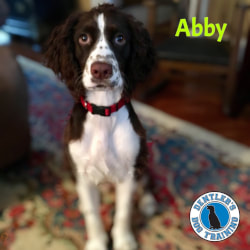 Abby likes being outside and doesn't come in when called. By using the Premack Principle (letting her go back out after she came in) and a high-value reinforcer (spray cheese) we had her coming in the house in a matter of minutes. Make it worth it for your dog to do it. 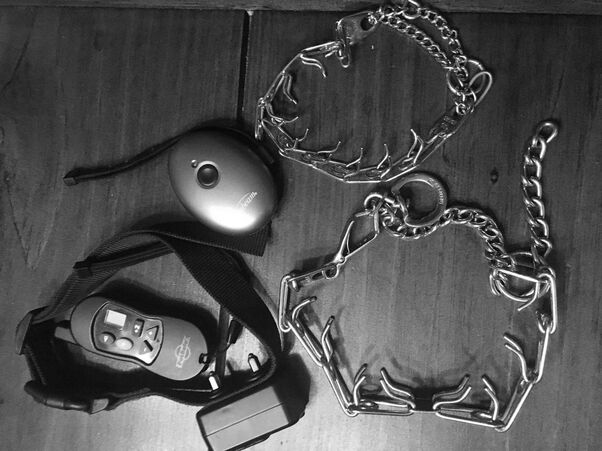 My motto is "training one end of the leash, educating the other". Today's lesson: Buyer Beware. In the picture below are "training tools" I acquired from one client, with one dog. The client called me because her dog is still highly reactive to other dogs, even after using these "tools". I asked if the reactivity is getting worse, and her answer was yes. That may come as no surprise to you, because several scientific studies have concluded that training dogs using confrontational methods (punishment) is associated with aggressive responses in many cases (1,2). What you may find surprising is that these "tools" are used by some professional dog trainers every day. That's right, the people that should know better are using "tools" that have been shown to be associated with causing aggression. But how can that be? How can a professional, who has an education in animal behavior, hours of hands-on experience, and an unlimited amount of scientific data at their fingertips, use "tools" that make a dog's reactivity worse? Well, because the dog training industry is unregulated and does not require any sort of education or experience. None. Zero. Zip. I feel so bad that my new client and her dog have been duped. Her previous trainer never told her he was going to use prong and shock collars. His website makes no mention of them. In fact, it says he uses positive reinforcement. So how do we know who and what to believe? Trainers may advertise that they use modern, humane training methods, and it might be true. But it might be a flat out lie. As Jean Donaldson, founder of the Academy for Dog Trainers suggests, ask your trainer the following questions:
If you don't get a straight answer, or your gut is telling you it doesn't sound right, run (don't walk) away. My philosophy is simple and crystal clear: I don't use choke, prong, or choke collars. Period. I won't yell at or hit your dog. Ever. It's time we stand up to these uninformed, uneducated, and unethical bullies that call themselves dog trainers and tell them, "You are not going to hurt my dog anymore!" 1. Herron, Meghan E., Frances S. Shofer, and Ilana R. Reisner. “Survey of the use and outcome of confrontational and non-confrontational training methods in client-owned dogs showing undesired behaviors.” Applied Animal Behaviour Science 117, no. 1-2 (2009): 47-54. 2. Casey et al.Casey, Rachel A., Bethany Loftus, Christine Bolster, Gemma J. Richards, and Emily J. Blackwell. “Human directed aggression in domestic dogs (Canis familiaris): Occurrence in different contexts and risk factors.” Applied Animal Behaviour Science 152 (2014): 52-63.  In our previous sessions we addressed Peanut's resource guarding by teaching him Drop It and Leave It so we can safely get items from him when we need to. Today we addressed the resource guarding directly by teaching him that our approach when he has an item doesn't mean we are going to take it - and thus him trying to protect it - but rather he is going to get something better when we get close. Isn't that rewarding his growling and snapping, you might ask? No. What we are doing in that situation is changing Peanut's emotional reaction to people approaching him., from "Oh no, here they come to take my stuff" to "Oh wow, here they come with some good stuff!" Within the hour we were able to easily and safely take from him a paper towel that was wet with chicken stock, something he has bitten over in the past. 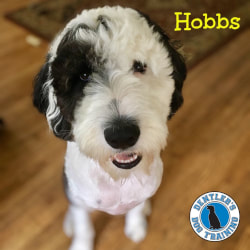 When we began walking Hobbs pulled a lot, and he is a big, strong boy! I then started using a very high rate of reinforcement (a click/treat every 2-3 steps) until he learned that sticking close by was worth it to him. He ended up walking great! 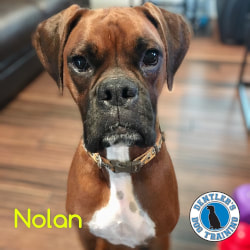 Nolan has a habit of bursting out of the back door when it is opened, or getting in the way at the front door when guests are entering. Do we punish these behaviors to make them stop? No. We ask "what do we want him to do instead?", then teach that. Within an hour both issues were resolved by teaching him to Sit and Wait patiently for the back door to be opened, and to Stay while we answered the door or when someone was leaving. Great job, Nolan!  Henry has a history of not coming when called. But food is a powerful motivator, and by using it she came to us quickly and consistently. She even retrieved her frisbee, something she never did before.  Today Thea learned how to walk without pulling. We started our walk by standing still - and rewarding Thea for looking at us. Once she understood that paying more attention to us was valuable to her we started walking and she chose to stay close by. In the beginning we used a high rate of reinforcement (frequent clicks and treats), but as she continued to walk better we reduced how often we rewarded her. Such a fun, relaxing walk. |
AuthorJeff Dentler, CPDT-KA, IAABC-ADT, FFCP, CTDI Archives
July 2024
Categories |



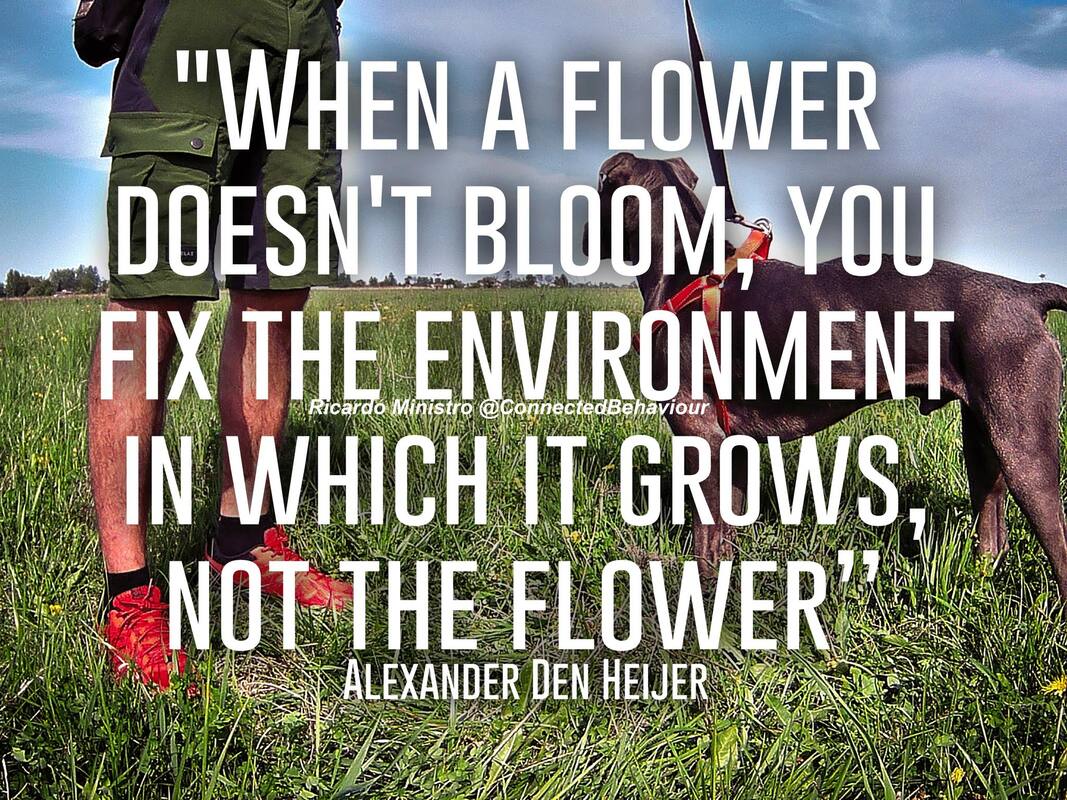
 RSS Feed
RSS Feed